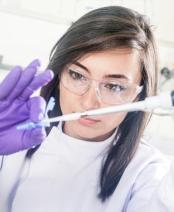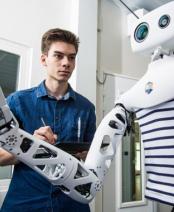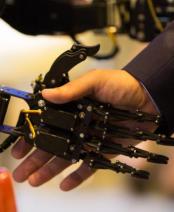Operation CIEDS 2025: A Groundbreaking Technology for Reconstructing the Jaws of War-Wounded
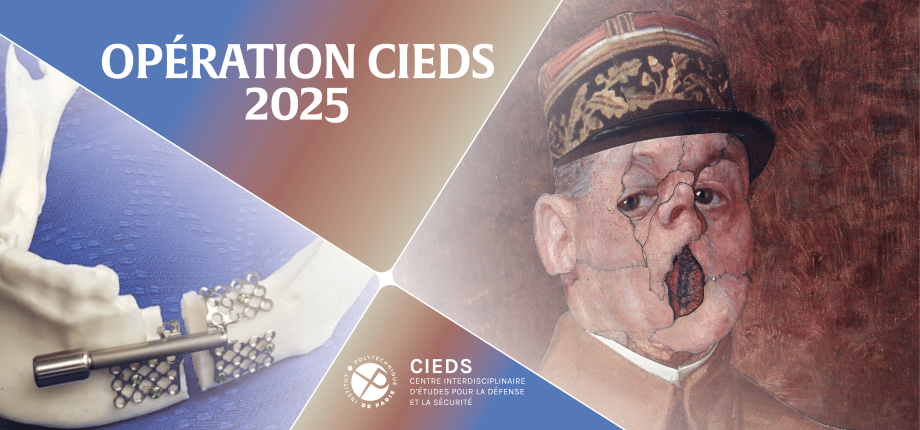
Biomechanics and Medical Engineering
Within the Mechanics and Interfaces Laboratory (LMI), Jean Boisson, a lecturer and researcher, studies the interactions between complex and biological systems and magnetic fields. Since 2016, he has been working on DOGMA and later VIVODOGMA — projects funded respectively by the Fondation des Gueules Cassées and SATT Paris-Saclay. These projects aim to develop a prototype medical device capable of lengthening a jawbone using a pair of magnets. This device is known as a magnetic mandibular distractor and is intended for use in cases of facial malformations or for patients who have suffered road traffic accidents resulting in significant bone loss. However, the application of this surgical technique is not limited to the jaw; it could potentially be used on most bones in the body with devices based on a similar principle.
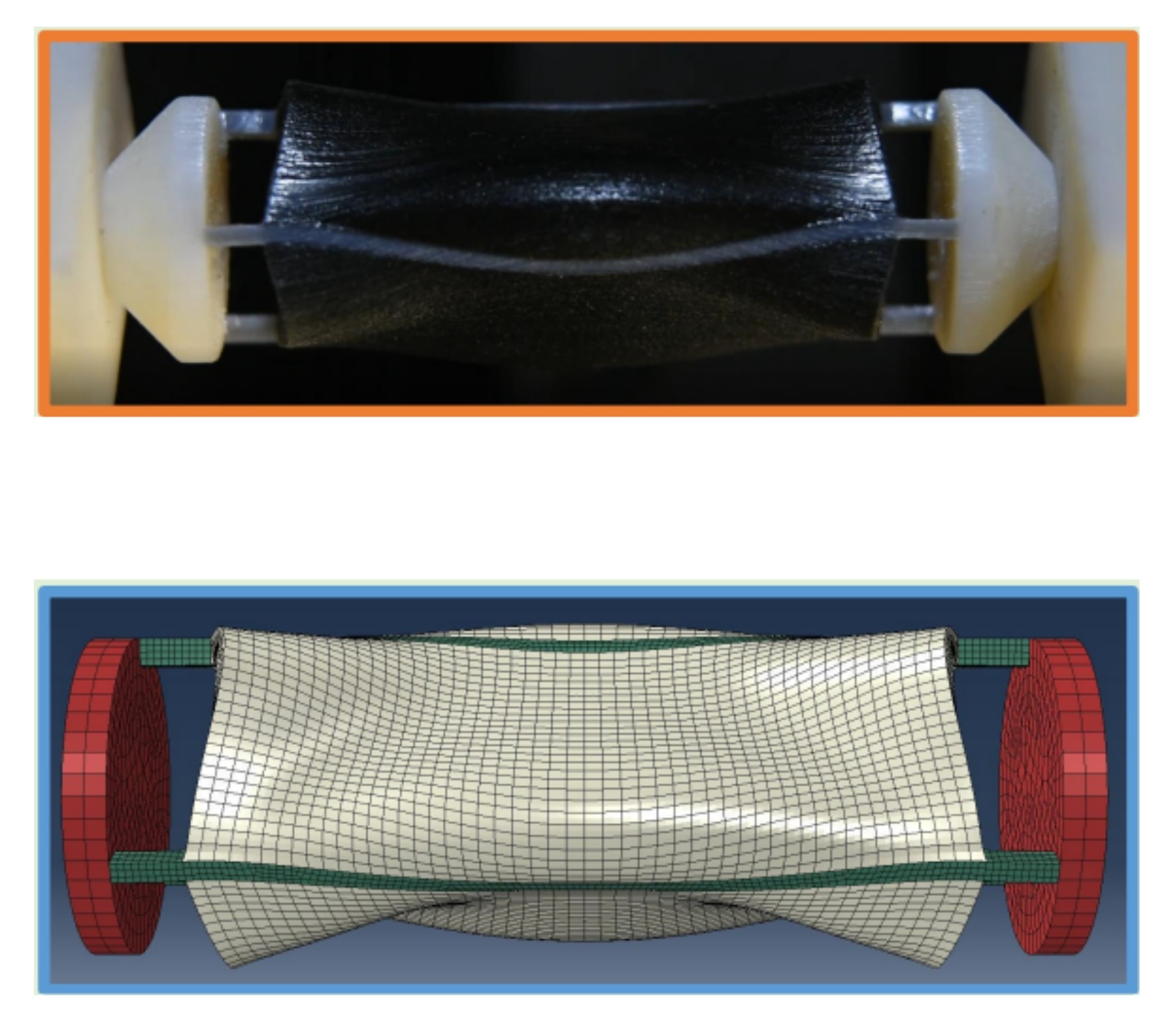
Through these projects, Jean Boisson developed expertise in the field of living mechanics and medical engineering, with a particular interest in the biomechanical properties of the tissues involved in osteogenic distraction, i.e. the distraction of bone plates in general.
The DOGMA project has opened up many avenues for exploring distraction osteogenesis and bone reconstruction. The French Ministry of the Armed Forces, through the Defence Innovation Agency (AID), has taken an interest in this issue and is funding several of Jean Boisson’s projects:
A PhD, running from 2022 to 2025, focuses on the study of periosteum adhesion to bone — the periosteum being the tissue that covers bone and contributes to its vascularisation.
During the DOGMA project, testing on anatomical specimens sometimes proved challenging in terms of replicating accurate mechanical properties. As part of the SIMFACE project, funded from 2021 to 2023, the aim is to simulate the properties of facial tissues through 3D printing in order to create highly faithful replicas to assess the impact of accidents or surgical procedures on the face.
- The distractor developed during this research requires the implantation of a permanent magnet on the bone, which generates a magnetic field throughout the procedure (lasting several months). The study of the magnetic field’s impact on cells and bone healing (or remodelling) is therefore essential. This is the goal of the MAGBONE project and a PhD funded by the AID since 2024. Another doctoral project, funded by the interdisciplinary centre Engineering for Health (E4H), is currently underway to characterise and better understand the role of this healing process in relation to its mechanical state.
Support disfigured war wounded
In 1921, Albert Jugon, Bienaimé Jourdain and Colonel Picot founded the association Les Gueules Cassées with the aim of supporting soldiers disfigured during the First World War. In 2001, the Fondation des Gueules Cassées was established. Continuing the work of the association created in 1921, it supports institutions of all kinds dedicated to treating facial and head trauma and their aftermath, as well as pathologies related to malformations, tumours, or degenerative diseases affecting brain function.
The Fondation des Gueules Cassées notably funds the research of Dr Natacha Kadlub. Among other efforts, the surgeon works on developing less invasive distractors for her patients. Historically, the distractors used were external. They consisted of rods passing through the skin to the bone, connected to an external bar which allowed activation of the distraction — in other words, the lengthening of the bone. With patient comfort in mind, Dr Patrick Diner and Professor Marie-Paul Vazquez developed an internalised distractor, except for the activation rod which still protruded through the skin. From this arose the DOGMA project, involving Natacha Kadlub and Jean Boisson.
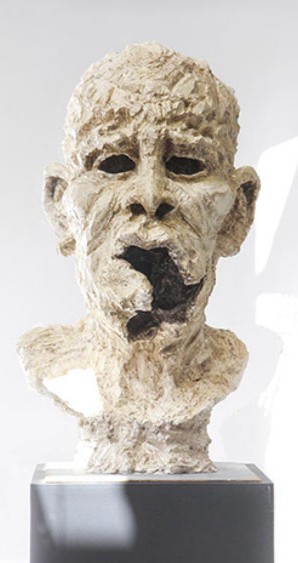
A promising surgery at the crossroads of disciplines
The DOGMA project began nearly 10 years ago, with the aim of achieving a distraction that can be activated solely by a magnet, allowing the medical device to be fully internalised.
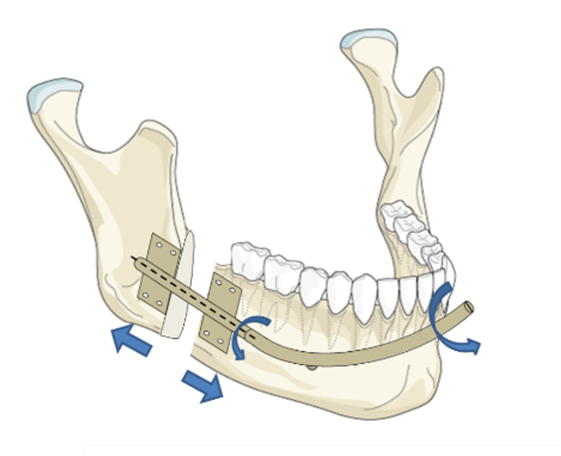
.png)
At the start of the project, Natacha Kadlub defined the requirements the device had to meet: it must be biocompatible and of a reasonable size. Jean Boisson was responsible for designing the device based on these constraints. According to the researcher, the biggest challenge was to “transform this rod into a magnet structure powerful enough to achieve magnetic activation, while keeping its size limited for clinical use.” Jean Boisson first carried out magnet sizing before identifying the right alloys capable of withstanding the various sterilisation processes. Émilie Su, a student at ENSTA, also contributed to the project by creating, with the help of Corinne Rouby, a lecturer at ENSTA, an analytical model to calculate the mechanical torque transmitted between two magnets. Students from École Polytechnique also contributed by conducting tests on bones.
After several years of research, the scientists developed a device composed of an internal magnet and a larger external magnet. The patient or parent would no longer need to turn a rod with a screwdriver, a particularly intrusive and anxiety-inducing action, but can simply move the external magnet to activate the distraction. This new device promotes better psychological acceptance. Remote activation significantly reduces pain. A less painful treatment can be carried out more frequently, leading to better healing and more effective bone consolidation. Jean Boisson and Natacha Kadlub are also recipients of the 2024 Fondation des Gueules Cassées award for developing this promising technology. Clinical trials are scheduled between 2026 and 2027.
Impacts on Defence at Operation CIEDS 2025
On Thursday 3 July 2025 at Operation CIEDS 2025, join the day dedicated to defence and security! The theme “Health, Biology, CBRN” will be highlighted throughout the day.
Exchange Forum
During the exchange forum, six dual-sector Health-BioTech start-ups will be present:
They are all committed to the importance of innovating for defence and security. Come and meet them!
Thematic Seminar “Health, Biology, CBRN”
Come and attend the thematic seminar “Health, Biology, CBRN”, during which we will have the honour of welcoming:
- Chief Pharmacist of Normal Class Services Anne Christine Mendes, Director and Chief Pharmacist of the Central Military Pharmacy
Or Chief Pharmacist Michaël PASTEUR, Innovation Correspondent at the Central Military Pharmacy - Jean Boisson, Lecturer/Researcher at the Mechanics and Interfaces Laboratory (LMI) of ENSTA
- Colonel (PC) Olivier Gorgé, Head of the Microbiology and Infectious Diseases Department at the Armed Forces Biomedical Research Institute (IRBA)
- Benoît Monégier Du Sorbier, Head of Communications and Partnerships, and Joni Frederick, Platform Manager at the Interdisciplinary Centre Engineering for Health (E4H) of the Paris Institute of Technology
- Jean-Louis Mergny, Inserm Research Director at the Laboratory of Optics and Biosciences (LOB) of École Polytechnique
- Carmen Dumitrescu, CEO of Gamma Pulse
The moderator of this thematic seminar will be Céline Giraud, Partnerships and Transfers Manager at CIEDS.
Céline Giraud also states that:
The “BIO” domain at the Ministry of the Armed Forces covers two subdomains: the health of military personnel in operations and CBRN risks – Chemical, Biological, Radiological, Nuclear. During Operation CIEDS 2025, CIEDS is proud to offer a varied programme of “health – biology – CBRN” technologies responding to defence needs: thematic seminar, dual-use start-ups, and posters by students from IP Paris.
Exchange Forum
During the exchange forum, six dual-sector Health-BioTech start-ups will be present:
They are all committed to the importance of innovating for defence and security. Come and meet them!
Thematic Seminar “Health, Biology, CBRN”
Come and attend the thematic seminar “Health, Biology, CBRN”, during which we will have the honour of welcoming:
- Chief Pharmacist of Normal Class Services Anne Christine Mendes, Director and Chief Pharmacist of the Central Military Pharmacy
Or Chief Pharmacist Michaël PASTEUR, Innovation Correspondent at the Central Military Pharmacy - Jean Boisson, Lecturer/Researcher at the Mechanics and Interfaces Laboratory (LMI) of ENSTA
- Colonel (PC) Olivier Gorgé, Head of the Microbiology and Infectious Diseases Department at the Armed Forces Biomedical Research Institute (IRBA)
- Benoît Monégier Du Sorbier, Head of Communications and Partnerships, and Joni Frederick, Platform Manager at the Interdisciplinary Centre Engineering for Health (E4H) of the Paris Institute of Technology
- Jean-Louis Mergny, Inserm Research Director at the Laboratory of Optics and Biosciences (LOB) of École Polytechnique
- Carmen Dumitrescu, CEO of Gamma Pulse
The moderator of this thematic seminar will be Céline Giraud, Partnerships and Transfers Manager at CIEDS.
Céline Giraud also states that:
The “BIO” domain at the Ministry of the Armed Forces covers two subdomains: the health of military personnel in operations and CBRN risks – Chemical, Biological, Radiological, Nuclear. During Operation CIEDS 2025, CIEDS is proud to offer a varied programme of “health – biology – CBRN” technologies responding to defence needs: thematic seminar, dual-use start-ups, and posters by students from IP Paris.











